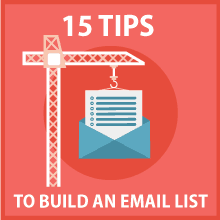
If you’re wondering how to build an email list the short answer is this: it requires a lot of thought and just as much work.
An email list is a long-term investment. Its influence on your business isn’t instant. But here’s the thing — a high-quality email list becomes the foundation for your future success. By subscribing to updates about your business, clients give you an opportunity to communicate with them directly.
In this article, we’re looking at the process of building an email list from top to bottom. If you don’t know how to build an email list, read on.
Tip #1 — Understand who your customers are
Before building an email list you have to decide what type of clients your business is focused on. Thankfully, doing that is simple. Make a list of characteristics that define your business and your ideal customer (this process is known as creating an ideal buyer’s persona).
Try answering questions such as:
- How broad is your audience?
- What kind of companies you pursue?
- What is the age (gender, beliefs…) of the clients you’re targeting?
- Why will they choose you over your competition?
- What kind of content do they prefer?
The answers you get help you decide which course of action to take when building an email list. Starting from where you’re going to look for subscribers to how you’re going to design your subscription form.
Tip #2 — Website is your main priority
Your website should be the top source of new subscribers for your email list. There are two major reasons for that. First, people who register for your email list on your website are already interested in what you offer. Which means that the churn rate is lower and the engagement is higher.
Second, if you promote your email list via social networks you’re going to be susceptible to changes that companies like Facebook and Twitter implement down the line. You don’t want for your subscriber rate to fall through the roof because Facebook changed its news feed algorithm.

(Source: Backlinko)
Tip #3 — Participate in online communities
Although the main bulk of your subscribers should come from your website, you’ll still benefit from promoting your business newsletter online. Find out where your customers hang out (LinkedIn networks, blogs in your niche, Reddit groups, Twitter) and start participating in the discussion.
If you see the right opportunity, ask people to subscribe for your email list directly. If you don’t, simply direct them to your website.
Tip #4 — Offline has its place
If you regularly participate in offline events (like conventions or meetups), you can leverage that to your email list’s advantage. Start asking people for their email addresses and offer to send them updates from your company. This approach may not be suitable for all types of companies, but it works.
Tip #5 — Newsletters are great for giving updates
Some companies regularly update their product. If you love introducing new features, create a weekly or a monthly newsletter. In it, briefly explain to your customers what has changed on your service and what’s in store for the next couple of months.
Think about it as an online newspaper dedicated to your business. People will appreciate an easy way to stay informed and learn more about your company.

(Source: Coda)
Tip #6 — Notify subscribers when new blog posts go live
Investing in a high-quality company blog is a great advice all on its own. Posting well-written and well-researched articles will gain you better rankings in Google, attract new clients and provide additional value for existing customers along the way.
You can use a blog to build out your email list, too. After publishing the first few articles and gaining some traction, start offering readers to subscribe. Send out notifications when new posts are up. If you publish great content, a huge chunk of your audience will subscribe organically, as they wouldn’t want to miss the next article.

Tip #7 — Start an online course newsletter
If you can tell people about new blog posts via email updates, why not go all the way and make your email updates their own thing?
Tell visitors to subscribe for a set number of emails, with each email dedicated to a specific question within one topic. For example, you can offer an online course on marketing, with each email explaining one of its aspects: cold emails, social media, etc.
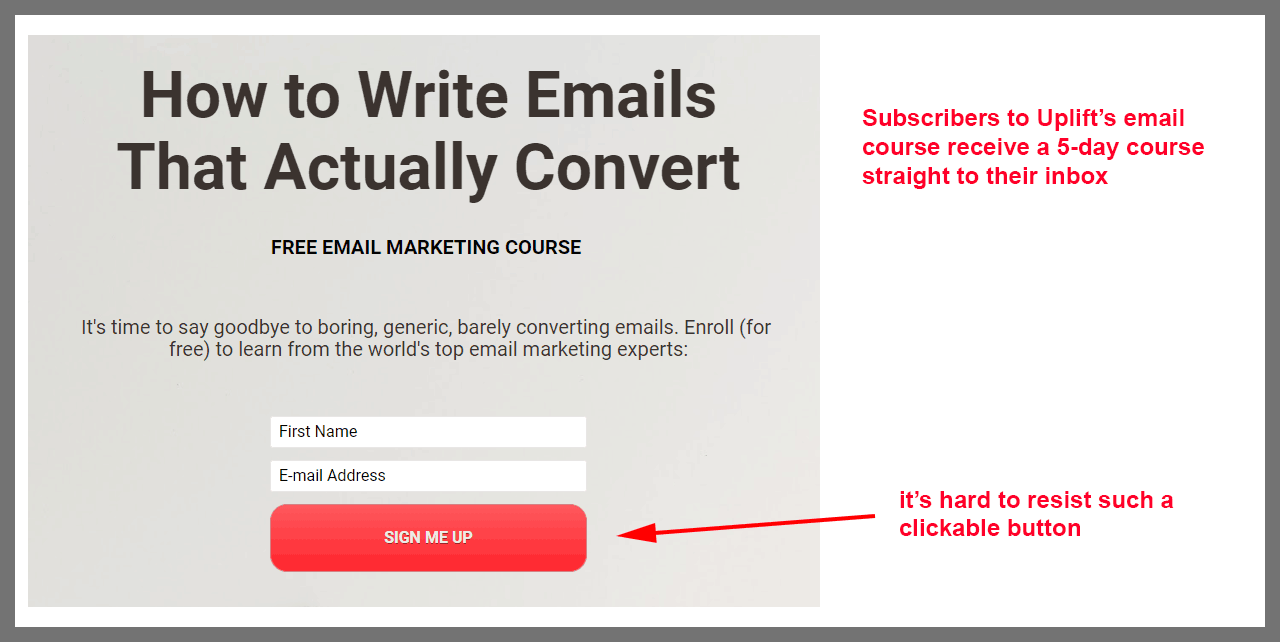
(Source: Uplift)
Tip #8 — Notify subscribers about new deals
Here’s a superb way for paid services (and especially online stores) to build out their email lists. Ask your visitors to subscribe for notifications about future deals and events at your store. This will tap into people’s FOMO (see the Scarcity persuasive technique), and it’s useful for those who want to wait for a new deal on the product they are planning to buy.
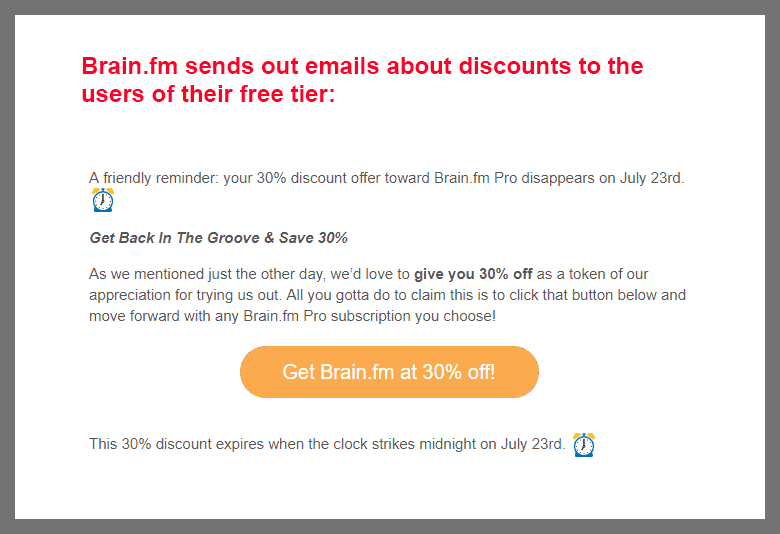
(Source: Brain.fm)
Tip #9 — Offer something exclusive
You can increase the number of subscribers by offering exclusive deals and other bonuses. For example, if you’re running an online store, give new subscribers promo codes they can use in your shop. If you’re developing a new product, offer people on your email list to test the beta version of your software. People will jump on the chance to feel a part of an exclusive club.

(Source: Bloomingdales)
Tip #10 — Give something for free
A cool price tag of $0 attracts a lot of people, and it can be a great way to boost subscription growth. Offer a free ebook on the topic your customers care about and ask for an email address before providing users with a download link. You can also start doing online events like webinars and gather emails before giving your subscribers free access to them.
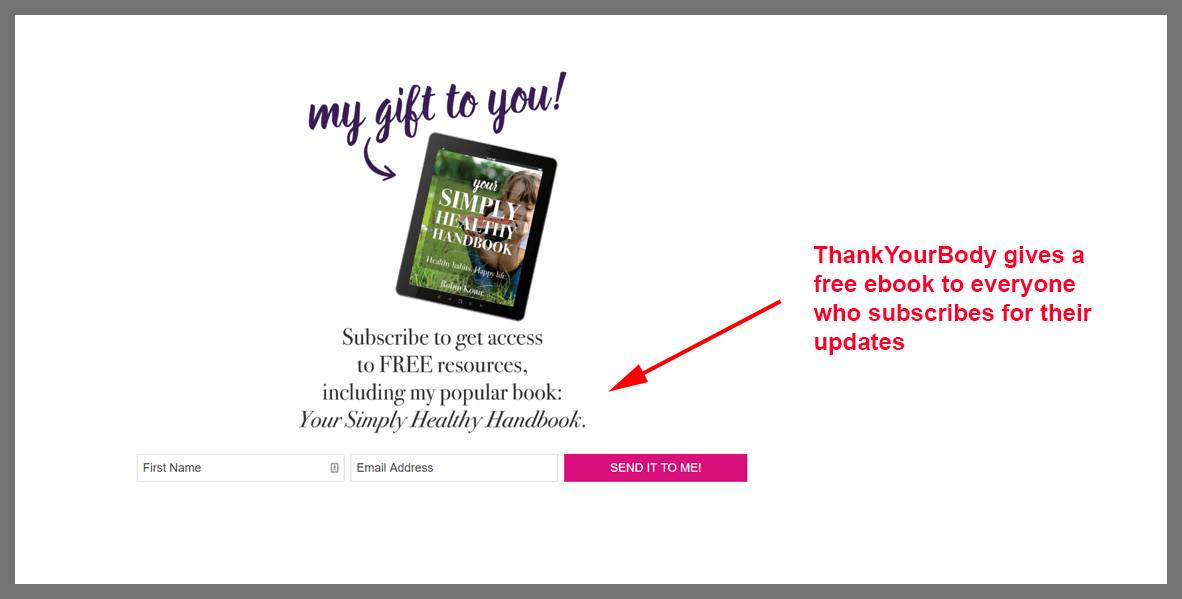
(Source: ThankYourBody)
Tip #11 — Find the right place for your subscription form
Carefully consider the placement of a subscription form on your website. Depending on your business and the type of your newsletter it can change dramatically.
For example, online stores can use popup subscription forms to tell visitors about new deals and offer to subscribe in order to stay informed. If you’re building an email list via your blog, a subscription form is best placed in the sidebar near the article or at the bottom of each individual post.

(Source: Ahrefs)
Tip #12 — Incorporate opt-in forms into your existing design
Another good idea is enhancing existing forms on your website with a subscription form. For example, offer a choice to sign up for your email list when visitors are creating a new account or during checkout.
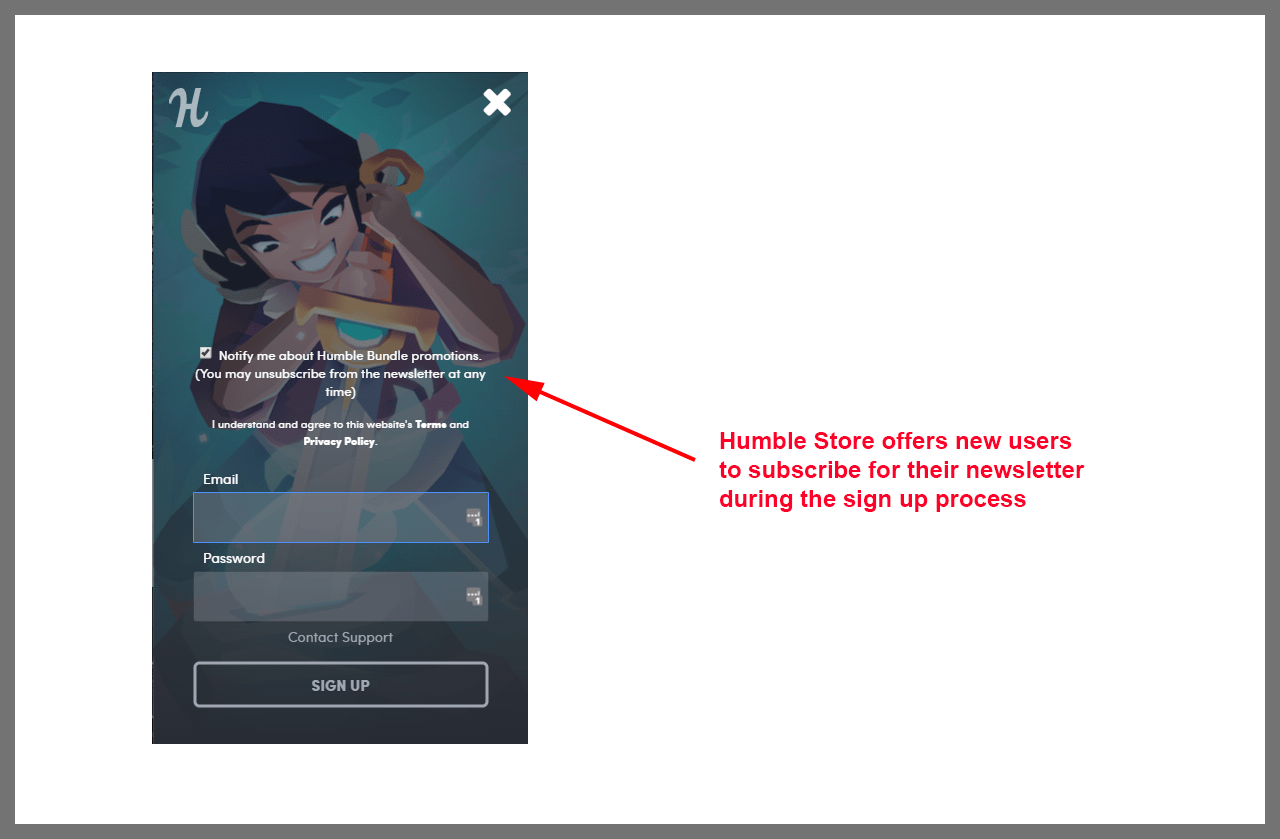
(Source: Humble)
Tip #13 — Avoid annoying pop-ups
Even though making your subscription form visible is important, don’t be too greedy about it. A lot of websites unnecessarily block users from looking at their content with a random subscription form popup. There’s nothing more frustrating than seeing a popup subscription form in the middle of a blog post you’re reading.
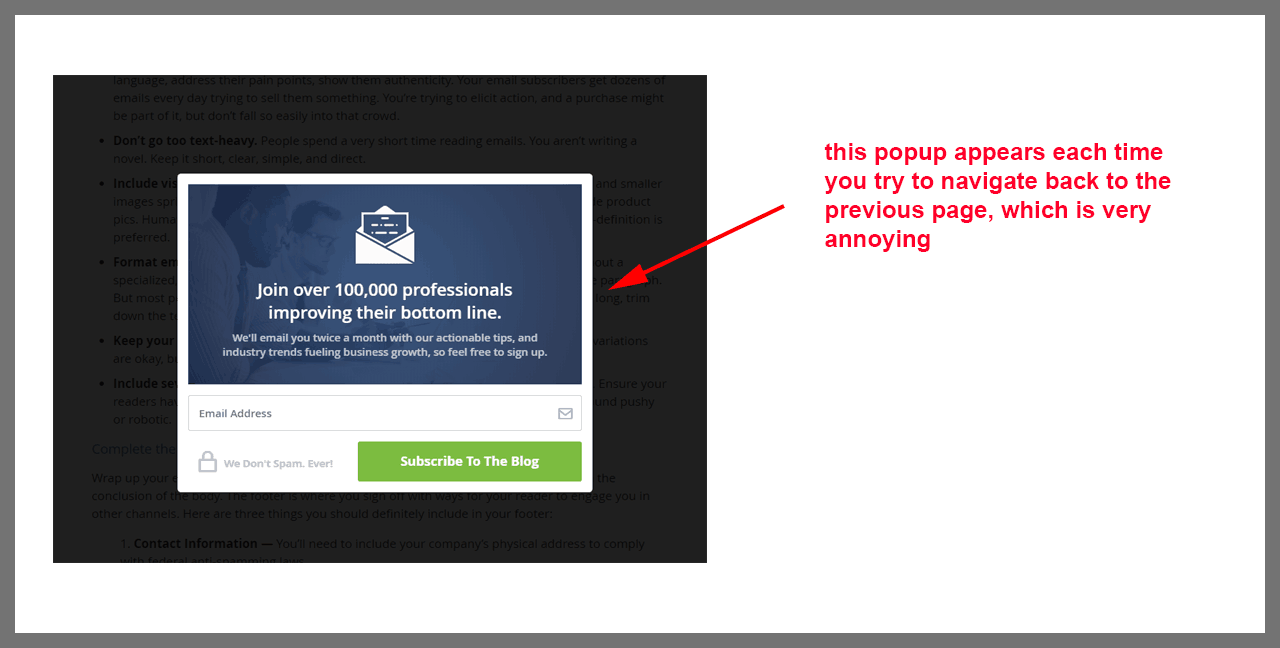
Tip #14 — Launch new landing pages
Research shows that websites with more landing pages generally have more signs ups. Marketing Land estimates that dedicated landing pages can increase conversion rates by 50%.
It’s a good idea to rethink your approach to landing pages. If you plan on giving out free ebooks, publishing a webinar or offering online courses, launch dedicated landing pages with prominent subscription forms to drive engagement.
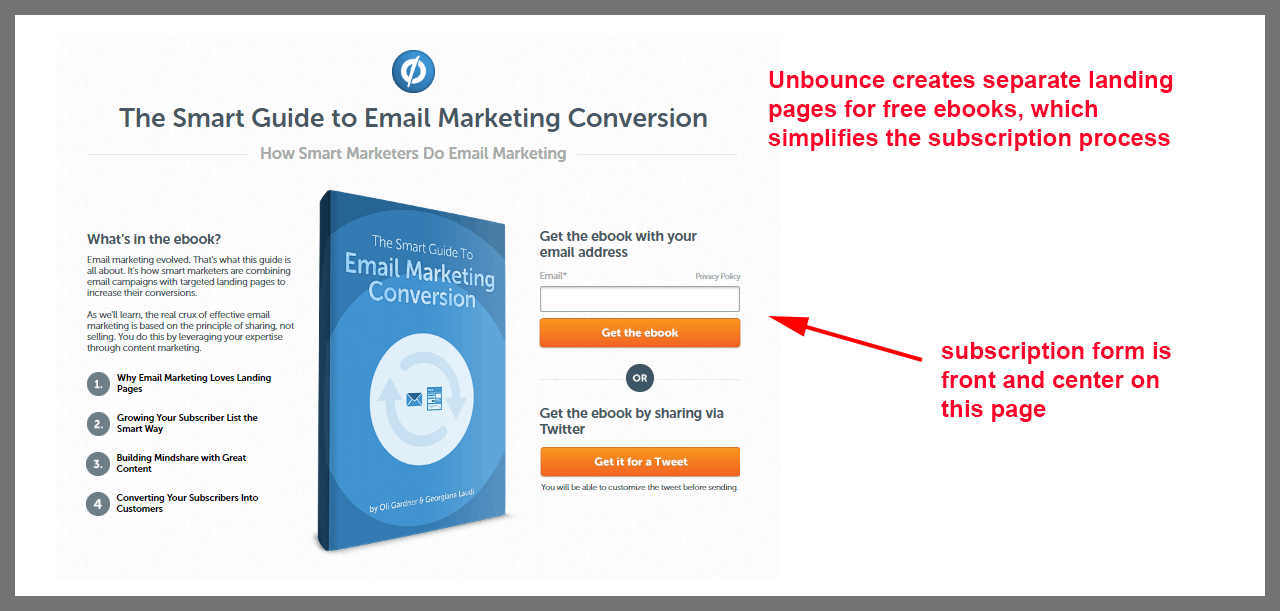
(Source: Unbounce)
Tip #15 — Work on your opt-in message
Take a cold hard look at the call-to-action on your subscription form. Make it vivid, friendly and engaging. State a couple of reasons for why a visitor should subscribe. And keep it short. The description of your business shouldn’t take attention away from the subscription form.
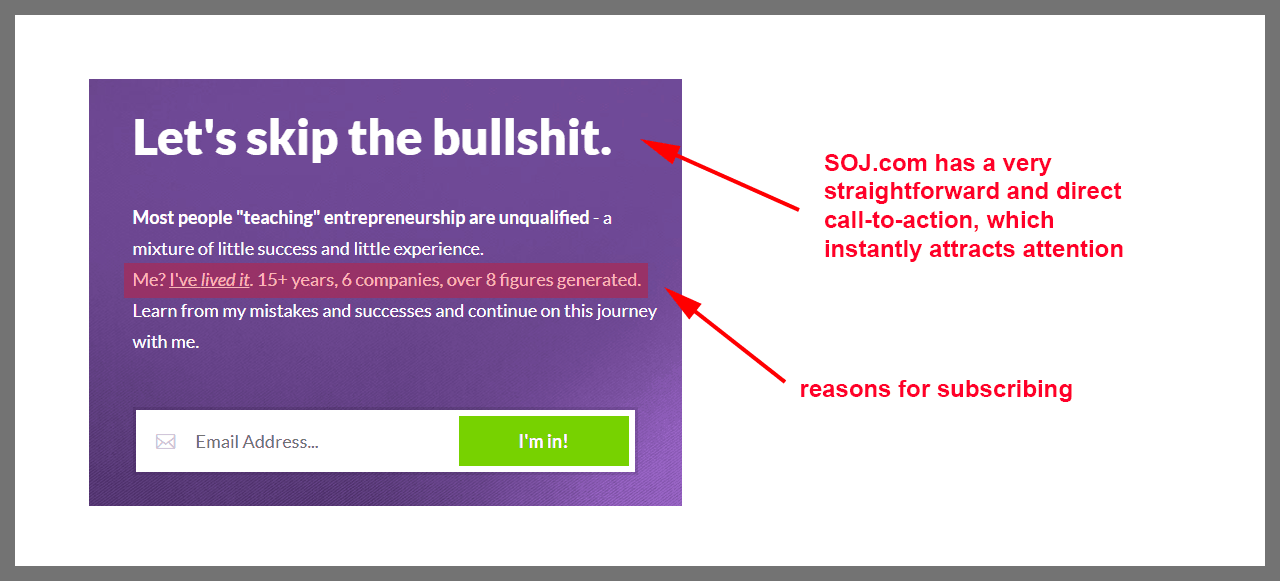
(Source: SJO)
Conclusions
Each business is different and that’s why some of these tips may prove more useful to you than others. Don’t be afraid to mix them up and combine them as you see fit in order to find an approach that works for you.
And if you have a tip on how to build an email list of your own? Share it in the comments section below!

Leave a Reply